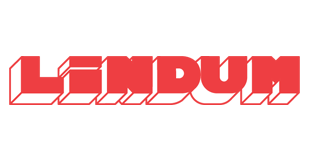Hydroseeding Machines
Jet-agitation vs. mechanical-agitation hydroseeders
Selecting the right hydroseeder is less about the brand and more about what machine is right for your needs. The main differences that need to be explored when purchasing a hydroseeder are in each component that makes up the machine: the tank, the agitation system, the pumping system, the dispersal system, and the power system. Components have different options, so we recommend taking your time and ensuring your selections are optimized for the task at hand – or the company’s preferences.
Above all else, the major decision that buyers will need to make is which of the two types of agitation systems will be most suitable for their needs: gear-driven, mechanical-agitation machines, or jet-agitation machines. Both types have a variety of benefits that the other may not have, and so it’s important to take a look at what both offer and weigh them up alongside your needs.
Jet-agitation machines
Jet-agitation machines are reliable, have few parts and are typically easier to run than mechanically agitated units. The pump must be run the entire time you are using the machine, however, a portion of its output is directed back into the tank to facilitate mixing of the mulch, seed, fertilizer, etc. The remainder of the pump’s output is used to push the material through the hose so that it can be applied to the ground. This type of machine utilizes a centrifugal pump for both mixing and spraying operations.
The main difference here is that, whilst a jet-agitation machine will use the pump from the tank to the turret or hose to mix the slurry, mechanical agitation uses rotating paddles to ensure a good mix. Jet-agitation machines generally require a smaller investment and are best used with paper mulch, pourable mulches and wood/paper blends. Because of this, these machines tend to be an equally good choice for both residential and commercial work.
Overall, the benefits of choosing a jet-agitation machine are that it has fewer components that can break, and they are very easy to use because there are minimal moving parts or controls – you simply put water in the tank and start the engine, and then the pump does the rest. Because of this, owning and operating a jet-agitation hydroseeder is an inexpensive alternative to their mechanical-agitation counterparts. That being said, they are limited in their ability to use wood fibre mulches – jet-agitation machines were primarily designed to run paper fibre hydroseeding mulch, so this is worth bearing in mind when choosing between both machines.
Mechanical-agitation machines
On the other hand, mechanical-agitation hydroseeders can handle 100% wood mulch, BFM’s and FGM’s, amongst others. These machines have a shaft that runs the length of the tank with steel paddles mounted on it, whilst the paddles are driven by belts and pulleys that are connected to the engine, or sometimes by a hydraulic system. Therefore, the advantage of mechanical-agitation systems is their ability to mix any type of mulch and, for the same size machine, you can fit more mulch in the tank and can spray more area per load. A positive here is that wood fibre mulch is often specified on jobs where erosion is a serious concern, or where temperature extremes and moisture availability are issues. Wood fibre mulch has a longer fibre length which, in some cases, can cause clogging in a jet-agitation system – a problem you’re less likely to encounter with a mechanical-agitation machine.
While these machines are quite capable in terms of the products they can mix, they are also much more complex than jet-agitation equipment. It is worth noting that, because of this complexity, this type of hydroseeder is more expensive, harder to operate and requires more maintenance than jet-agitation machines. In return for the increased cost, however, you get a machine with much greater capability. Whilst it depends on the scope of the task at hand, you won’t have to turn down a job because your machine isn’t capable of mixing the mulch that is required.
Above all, making a decision on hydroseeding equipment is best when it coincides with the type of hydroseeding work you perform. In many areas, such as on residential and small commercial jobs, for example, paper fibre mulch is the primarily used and so the lower cost of ownership is more attractive and sensible to buyers – especially those just getting into the hydroseeding industry. Mechanical-agitation and jet-agitation machines both have a variety of benefits that may be more tailored to your needs, so remember to take your time when weighing up what each has to offer. If you need any advice please feel free to contact Oliver Brown Ltd by clicking here.














